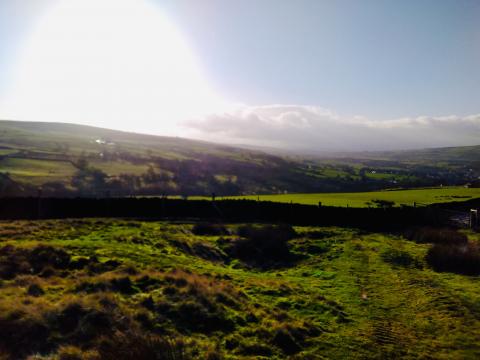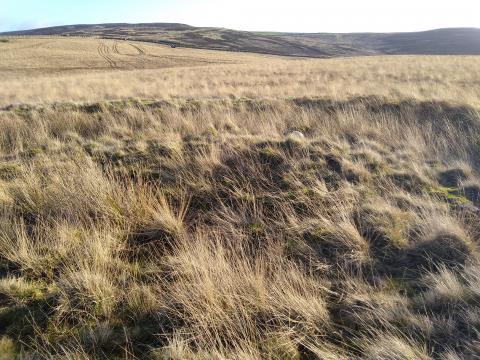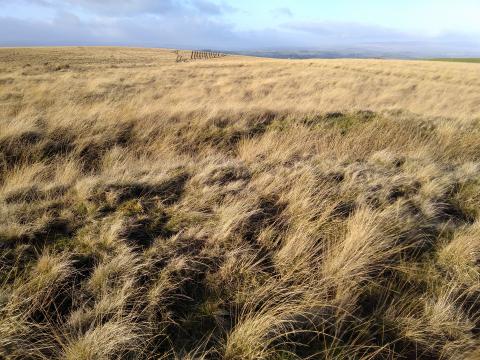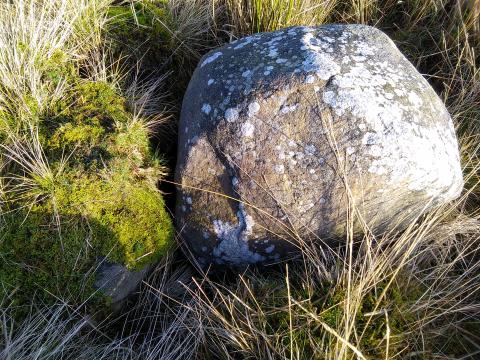Earby’s Ring Stone Cairn

A two hour walk from my home is an ancient earthwork on the moors between Earby and Thornton. On an east-facing hillside called Rectory Allotment is a ring stone cairn. It took me a little while to find it, having misread my map, but there it was. Not much to look at, really, but its age excuses its condition. Dating from either the Early Bronze Age (2000–1500 BC) or Middle Bronze Age (1500–1200 BC), this circle would have been an ancient ruin when Roman scouts surveyed these northern hills.

So what is it? It’s a circle, in the middle of which is a pile of stones, and around which is a ditch. Historic England says such are the sites of ancient ritual, citing buried pottery; other sources say they are burials of kings or places of feasting. It’s hard to know for certain. We can be sure that ancient man once occupied the valleys and hills we now call our own. He ploughed, built, lived and died here. He left nothing but weathered, circular mounds and some standing stones. Each civilisation foolishly assumes it is the greatest and will survive time’s passage. Not one of them endures forever, each one crumbles and is forgotten. Ours is no different; our proud buildings and concrete jungles will collapse and be replaced as surely as this ancient ring stone cairn:
I saw the Lord standing upon the altar: and he said, Smite the lintel of the door, that the posts may shake: and cut them in the head, all of them; and I will slay the last of them with the sword: he that fleeth of them shall not flee away, and he that escapeth of them shall not be delivered. Though they dig into hell, thence shall mine hand take them; though they climb up to heaven, thence will I bring them down.
Amos 9:1


- Log in to post comments


 Sunday Worship 10.45am & 6.00pm
Sunday Worship 10.45am & 6.00pm